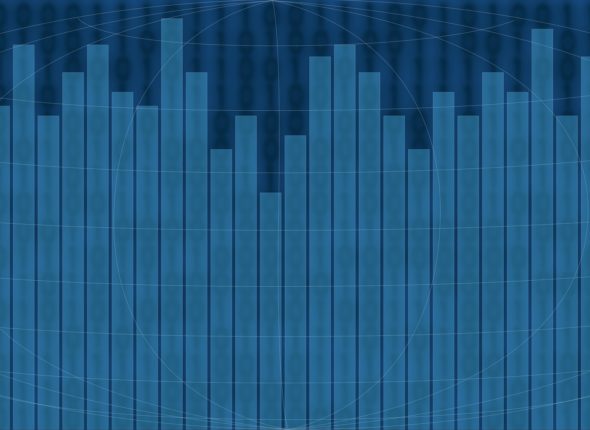Analytics fuels the procurement function with clear insights into timely demand recognition, better sourcing models, and risk avoidance. However, only a few procurement functions have been able to tap the full potential and to take advantage of the power of data.
Our experience shows that organizations aim to shift their procurement from a traditional operational function into an integrated partner for accomplishing their organization’s digitalization ambitions. Integrating robust data strategy and analytics tools into already existing processes and people is a key enabler for smart and agile procurement.
Why focus on analytics now?
In the recent Digital Transformation in Procurement Study conducted by CAMELOT, 71 % of the participating procurement executives highlighted the underutilization of data in their organization as a major challenge for their digital transformation. Furthermore, data quality was described as minimal to acceptable by overwhelming 81 % of the respondents. Overall, data analytics, including predictive analytics and artificial intelligence, while currently exhibiting only low adoption (12 %), were selected as the most desirable technologies in the field of procurement by 75 % of the participants (Figure 1).
 Figure 1: Technology Exploration in Procurement
Figure 1: Technology Exploration in Procurement
The procurement function is concerned with acquiring goods and services that are vital for the organization and therefore is very closely aligned with the overall company strategy. In its core, procurement facilitates three high-level processes (Figure 2):
- Source-to-Contract, focusing on the definition of suitable sourcing strategy and the contracting of fitting suppliers,
- Purchase-to-Pay, referring to the most operational tasks of ordering and acquiring goods and services, and
- Supplier Lifecycle Management, encompassing the strategic and operational collaboration and relationship management with suppliers.
 Figure 2: Core Procurement Processes
Figure 2: Core Procurement Processes
Not only do these processes connect a great number of internal and external stakeholders, they also generate and rely on a grand amount of data – both transactional and master data. However, the aforementioned study results and anecdotal evidence from our customers emphasize the low utilization of such data. Low transparency internally and externally as well as the unpreparedness for the digitalization wave as a whole are unfortunate consequences of this phenomenon. The fulfillment of procurement’s ambition to be positioned as a strategic partner within the organization, to drive further process improvement, and thus larger cost saving and cost avoidance is greatly dependent on the function’s ability to successfully approach the topic of data management.
Analytics Use Cases for Procurement
While procurement experts place a strong emphasis on digitalization as an enabler, the main priorities identified in the Digital Transformation in Procurement Study remain in the core of the function: category management, spend management, strategic sourcing and supplier management. By applying data analytics to these areas, procurement can benefit from reduced risk, increased savings and more effective decision-making. In this sense, analytics – starting with descriptive analytics and extending with predictive and prescriptive analytics – can support procurement in identifying specific pain points in strategic focus areas (Figure 3).
 Figure 3 Future Operating Model
Figure 3 Future Operating Model
The following are only a few of the opportunities analytics in procurement can address:
- Procure-to-Pay & Category Management analytics: analysis of transactional procurement data from ERP systems and other internal sources such as purchase order cycles and general spend data can help optimize payment terms and as a result, improve cash flows. In addition, by clustering spend and identifying patters, a more sophisticated category management approach can be developed. Overall, the combination of payment and payment terms analytics, spend management and invoice analytics may bring more transparency, optimize spending trajectories and reduce risk.
- Strategic Sourcing analytics: by analysing suppliers’ past performance on one side and own past purchasing behaviour on the other, organizations are better equipped to identify the best times to run sourcing events (RFI, RFP, Auction) and the most suitable suppliers to invite to such events. Furthermore, analysis of suppliers’ past performance, in combination with market pricing and risk assessments (based on external data), provides additional insight into the quality of service, and potential risks and compliance issues, thus, delivering additional value for making better sourcing decisions and identifying strategic suppliers.
How We Support Our Clients
Equipped with expertise in both procurement and data analytics, CAMELOT supports customers starting with strategic and process assessment to multi-technology implementations (Figure 4). Identifying the top strategic priorities for the procurement organization and selecting suitable use cases with high business value potential is often among the first steps. After analyzing the current state, gathering specific requirements, and designing a fitting solution concept, the focus falls on implementing a well-integrated solution addressing the former challenges in the area of procurement.
 Figure 4 CAMELOT Approach to Analytics in Procurement
Figure 4 CAMELOT Approach to Analytics in Procurement
We would like to thank Albena Bogoeva for her contribution to this article.

